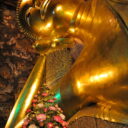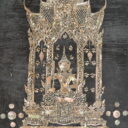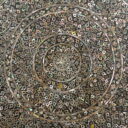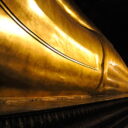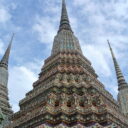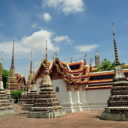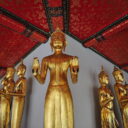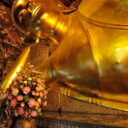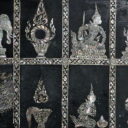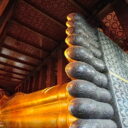Wat Pho was built by a king of Ayutthaya period and it was here before Bangkok was established as the capital. The Grand Palace was later built next to it in the reign of King Rama I who also ordered a complete restoration of the temple in 1788.
The temple underwent another major renovation in the reign of King Rama 3 who wanted to turn it into a learning centre for all.
Commonly known among locals as Wat Pho (Temple of the Bhodi Tree), the full name of this first class royal monastery is Wat Phra Chetuphon Vimon Mangkararam Ratchaworamahawihan, a name given by King Rama IV.
The highlight here is the 46 meter long Reclining Buddha with intricate mother of pearl decorations on the soles of the feet. These symbols are reminders of actions that bring peace and happiness to one’s mind. Also in the compound are many stupas including the famous four elegant pagodas known in Thai as “Phra Maha Chedi Si Ratchakan”. Each of them contains the ashes of the first four kings of the Chakri Dynasty.
Temples served as schools or training centres before formal education began in Thailand. Wat Pho has been teaching traditional Thai medicine since the reign of King Rama III. The temple still has statues demonstrating exercise and meditation and stone inscriptions on various topics from medicine to literature. Its meditation centre and traditional Thai massage school are also internationally recognised. Thai massage classes and services are offered for a fee.
